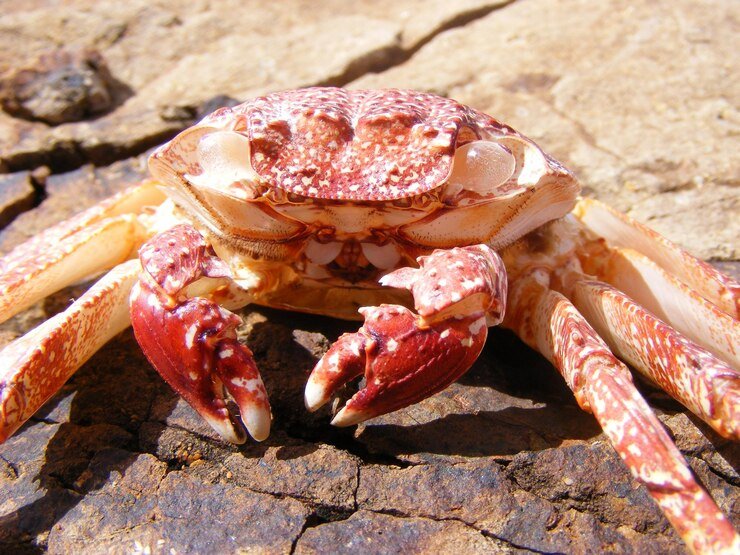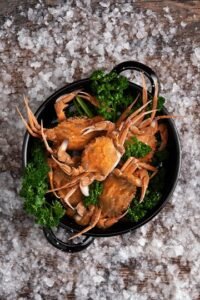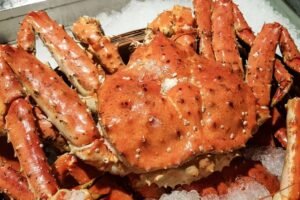What is the difference between Dungeness and snow crab legs?Crabs are globally prized for their rich flavors and culinary versatility. Not all crabs are the same, however. Dungeness and snow crabs stand out, each favored for distinct qualities. This article explores the differences between their legs in taste, texture, size, and uses. Whether you’re an expert chef or a food enthusiast, understanding these differences will guide your seafood choices.
Overview of Dungeness and Snow Crab
FAQs
This section will address some of the most common questions related to Dungeness and Snow Crab, providing clear and concise answers based on their culinary characteristics and applications.
Which crab is better for steaming?
- Discuss the suitability of each crab type for steaming. Highlight that Dungeness Crabs, with their larger size and thicker shells, retain moisture well and are ideal for steaming. Their meat comes out tender and flavorful, making them a preferred choice for this cooking method.
- Mention that while Snow Crabs can also be steamed, their thinner shells and smaller size might require more careful timing to avoid overcooking.
Which crab is better for crab cakes?
- Analyze the texture and flavor of each crab type as it pertains to making crab cakes. Snow Crabs are often favored for crab cakes due to their tender meat that binds well with other ingredients, offering a subtle sweetness that complements the seasoning in crab cakes.
- Explain that Dungeness Crab can also be used for crab cakes, especially when a more pronounced crab flavor is desired.
Can one crab be substituted for the other in recipes?
- Address the possibility of substituting Dungeness for Snow Crab and vice versa in various recipes. Note that while both can be interchangeable in some dishes, the differences in flavor and texture might affect the final outcome of the recipe.
- Suggest considering the specific characteristics of each crab type when substituting, especially in dishes where the texture or flavor of the crab is a critical component.
By answering these FAQs, the section will help readers better understand the practical considerations of cooking with Dungeness and Snow Crab, aiding them in making informed choices suited to their culinary needs.
Recommended Internal Links
-
- Dungeness Crab Legs
- Embedding Phrase: « Dungeness Crab Overview »
- Context: Embed this link when introducing the Dungeness Crab in your article to provide readers with additional information on how to cook and serve Dungeness crab legs.
- Crab Salad
- Embedding Phrase: « crab cakes »
- Context: When discussing the culinary uses of Snow Crab, particularly in making crab cakes, link to this page for a variation using crab in salad form, showcasing another way to enjoy crab meat.
- Which Crab Legs Are Best
- Embedding Phrase: « personal preference and dish suitability »
- Context: In the conclusion where you discuss choosing between Dungeness and Snow Crab based on personal preferences and specific dishes, this link will provide readers with further insights into selecting the best crab legs for their needs.
- Dungeness Crab Legs
Additional Resources and Readings
- American Oceans: Dungeness vs. Snow Crab
- Embedding Phrase: « global concern over sustainable seafood practices »
- Context: This link provides additional information on the ecological impacts and sustainability efforts concerning Dungeness and Snow Crabs, which can be included in the discussion about sustainability issues in Part 7.
- Simply Ecologist: Dungeness Crab Vs. Snow Crab Comparison
- Embedding Phrase: « distinctive taste profiles »
- Context: Use this link when comparing the flavor and culinary uses of Dungeness and Snow Crabs in Part 3. It offers a deeper insight into the taste differences and how these affect culinary preferences.
- Eco & Stylish
- Embedding Phrase: « consumer choices in preserving these valuable marine resources »
- Context: This link can be incorporated into Part 7, under consumer responsibility, to provide readers with further guidance on making eco-friendly seafood choices that support sustainable practices.
Choosing the Right Crab for Your Culinary Needs
What is the difference between Dungeness and snow crab legs? In wrapping up this comprehensive guide on Dungeness and Snow Crabs, we’ve explored a multitude of facets that these two popular seafood choices embody. From their distinct habitats and unique physical characteristics to their nuanced flavors and culinary applications, each type of crab brings its own set of attributes to the table. We’ve delved into the historical and cultural significance of these crabs, underscoring their impact on regional economies and traditions. Furthermore, we’ve addressed the critical aspects of sustainability, highlighting the importance of responsible fishing practices and consumer choices in preserving these valuable marine resources.
The preparation and cooking tips provided aim to enhance your culinary experiences, ensuring that each meal is not only delicious but also a celebration of the rich flavors that both Dungeness and Snow Crabs offer. By experimenting with the innovative recipes and techniques discussed, you can elevate your cooking and perhaps discover new favorite dishes.
As we conclude, remember that the choice between Dungeness and Snow Crab often boils down to personal preference and the specific requirements of the dish you’re preparing. Whether you’re hosting a lavish dinner party or simply cooking a quiet meal at home, understanding these crabs’ distinct qualities will help you make the most of their exceptional culinary potential.
This guide has aimed to equip you with the knowledge to appreciate the diversity and depth of Dungeness and Snow Crabs, enhancing your appreciation and skill in preparing and enjoying one of nature’s finest seafood offerings. Whether you’re a seasoned chef or a culinary novice, may your adventures in cooking and enjoying crab be as rewarding as they are flavorful.



